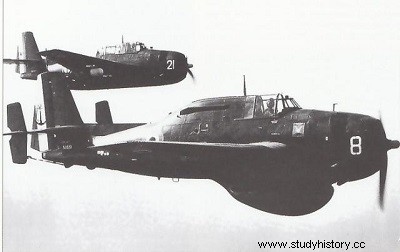
A mining prospecting device against German submarines
Another detection device used was the Airborne Magnetic Detector, currently called the Magnetic Anomaly Detector (MAD). Shortly before the war, geologists used magnetic detection for mineral prospecting, using sensitive instruments measuring the variation of the Earth's magnetic field. One should, theoretically, be able to detect in the same way the presence of a large mass of iron like that of a U-boat in a non-metallic environment. An important step was taken in 1940 with the invention of the "saturable core magnetometer" by Victor Vacquier of the American company Gulf Research &Development. This device was much more sensitive than all the previous ones and Vacquier intended it for prospecting for metals. Soon after, the US National Research and Development Board began to take an interest in the problem of underwater detection. Starting from the fact that magnetism is one of the rare phenomena not affected by a change of environment, such as the passage from air to water, this Council applied Vacquier's invention to underwater detection. At the end of 1941, an airplane equipped with this device had spotted submarines up to 120 m below it.
The MAD had a large ASDIC advantage:it was passive, that is to say did not emit any sign detectable by a submarine. On the other hand, the magnetic variation produced by it being extremely weak, the device had to be so sensitive that the accuracy of its alignment with the earth's magnetic field had to be about six minutes of arc; this required very precise flight from the detector aircraft pilot.
